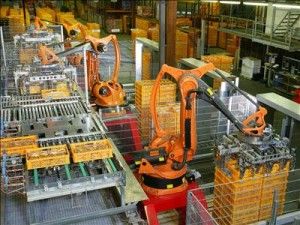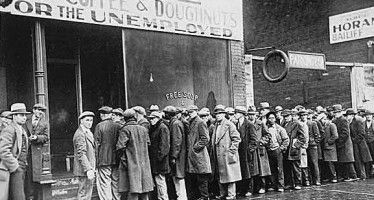Redevelopment 2.0 won’t rejuvenate ‘old factory belts’
 This is Part One of a two-part series. Part Two is here.
This is Part One of a two-part series. Part Two is here.
March 28, 2013
By Wayne Lusvardi
Redevelopment 1.0 died statewide in 2011 when Gov. Jerry Brown phased it out, mainly because it was robbing local school districts of needed property tax revenues.
Now Los Angeles-based redevelopment expert Larry Kosmont has written a bill, AB 690, to bring “Redevelopment 2.0,” supposedly to rejuvenate “old factory belts” in former industrial areas. The bill will be sponsored by Assemblymember Nora Campos, D-San Jose. The Southern California Association of Governments and the Los Angeles County Business Federation have signed on to support it.
But would it bring back jobs in “old factory belt” areas, especially areas with closed aerospace plants that Kosmont is targeting in such cities as as El Monte, South Gate, Montebello and Huntington Park?
The problem in those areas is not the lack of “tax increment financing,” which under Redevelopment 1.0 uses “hypothetical future gains in taxes to subsidize current improvements.” Instead, the lack of jobs and economic growth is due to the new market realities of e-commerce.
Tax increment financing is a tool used by redevelopment agencies to “upzone” older commercial and industrial properties for a higher use, but freezes the property tax assessments at the old levels. The increase or “increment” in newly created taxes then is used to repay bonds to assemble land and build infrastructure such as roads, utility lines and rail service to develop shopping malls and industrial parks.
L.A. County’s old factory belt
In Los Angeles County’s “old factory belt,” the land for industrial use has mostly already been assembled, the infrastructure is in place, and rail service is already available from the Alameda Rail Corridor that links the ports with wholesale distribution hubs.
In Los Angeles County, the Alameda Corridor East already is in the process of being upgraded with 22 new grade separations at a cost of nearly a half billion dollars — $498.5 million — to reduce vehicular congestion along local truck routes. The Alameda Corridor created traffic congestion that is frustrating truck shipping times to and from local warehouses and end customers.
Kosmont’s AB 690 does not propose to use the old criteria for redevelopment — the elimination of “blight” — for his proposed “Job and Infrastructure Districts” that would have to be approved by 55 percent of the voters. Instead of blight, Kosmont’s bill proposes to substitute unemployment as the criterion for redevelopment instead. But what apparently has gone unrecognized by Kosmont is that what is mostly inhibiting job growth in Los Angeles County’s “old factory belt” is industrial building obsolescence or “blight” caused by the retail market shift to e-commerce.
e-Tailing changing industrial real estate
e-Tailing — the buying of retail goods online — has changed the industrial real estate market. One third of all large industrial building space in the United States in 2012 was for “e-tailers” and e-commerce. This has been called the shift from “bricks and mortar” retail outlets to “bricks and clicks” online retailing.
The shift has resulted in increased demand for big-box industrial warehouses, defined as those more than over 400,000 square feet. That’s the equivalent to nine football fields in floor space, with 36-foot high ceilings, mezzanines and sprinkler systems. The space accommodates state-of-the-art storage racking and logistics automation and robotics systems. Kosmont’s bill is being advertised as a way “to bring a city and a developer together to remake an abandoned warehouse into a supermarket or a modern industrial facility.” But the website, “Area Redevelopment,” aptly summarizes the prospects for re-using old industrial buildings for e-tailing is infeasible:
“New-generation industrial is five times more labor intensive than traditional retail distribution facilities, requiring more parking, mezzanine build-outs, increased building automation, and other features that are difficult or impossible to retrofit in older buildings.”
Showcase property for proposed AB 690
Proponents of the new bill are directing newspaper reporters to the former Crown City Plating facility at 4350 Temple City Boulevard in El Monte (see photo here) as a prime candidate for Kosmont’s version of redevelopment-lite. According to the State Employment Development Department, the unemployment rate in El Monte is 12.6 percent, with 6,500 people jobless, compared to 9.8 unemployment for all of California.
This 1956-built, 179,948 square foot building on a 7.3-acre site is too small and its ceiling height too low for e-tailing. And rehabilitation always costs more than new construction. Newspaper reports also fail to mention that this vacant facility is located on a former Superfund site. Crown City Plating went bankrupt in 2008.
Kosmont’s proposal would likely end up subsidizing new industrial building construction at a time when interest rates are so low that no public subsidy would be needed. The Federal Reserve’s “Zero Interest Rate Policy” (ZIRP) has rendered tax-exempt bond financing superfluous.
What the “old factory belt” in Eastern San Gabriel Valley and Los Angeles Industrial core has going for it is Class I rail access. This already provides what is called intermodal methods of transporting goods from ships to rail to trucks to UPS or Fed-Ex delivery to customers’ doors.
Part Two of this two-part series is about e-tailing competition.
Related Articles
The whole truth about California’s employment picture
News on the economy appears good with new national numbers on economic growth released and polls measuring the attitudes about
Flat Tax idea revived
Jan. 15, 2010 By JOHN SEILER Challenging times demand innovative answers to problems. This is such a time for the
Governor outlines weak agenda
Jan. 7, 2010 By JOHN SEILER He won’t be back. This was Gov. Arnold Schwarzenegger’s last State of the State



